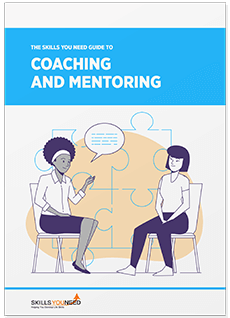5 Skills You Need for
a Better Virtual Classroom
See also: 8 Types of Learning Styles
Online teaching existed on many educational platforms long before the COVID-19 crisis. Many people work remotely, sharing a virtual classroom with others from all around the world. However, the Covid-19 pandemic took things to another level. No one could ever think that virtual classrooms would become the core of teaching. But they did!
Whether you are a beginner or an experienced online teacher, there is always space to improve your skills and create a better virtual classroom for your students. In that way, you might even get more students visiting your lessons. So, let’s cover five essential skills to achieve this!
Technical Skills
First, running a virtual lesson without possessing at least basic technical skills is impossible. Actually, not only basic; you need more than knowing how to turn on and off a computer and use MS Office and social networks.
Of course, the list is extensive, yet skills such as email management, electronic presentations, and video conference are essential.
Additionally, you must have heard of cloud platforms as a source of many educational resources. Considering the cloud’s educational benefits, it might lead the virtual classroom to another level by providing accessible tools, online collaboration, and many learning facilities. Discover one of the best cloud service providers on the market to help you along the way.
Creativity
Indeed, creativity is an essential skill for creating engaging lessons and productive e-learning materials. It is crucial when it comes to attracting students’ attention. And a virtual environment might be the best way to express yourself. Why? Because it offers many interactive tools which you may use to make the curriculum more fun and easily memorable for students.
A creative teacher will give the maximum and import images, make interactive presentations, and create collaborative tasks. Therefore, being familiar with graphic design, for example, will help the teacher create content as mentioned above and, once again, keep the students’ attention during the whole lesson.
Adaptability
Adaptability is a must-have skill whether you are a teacher in a real classroom or a virtual one. It implies being able to adapt to changes.
For instance, a teacher in a virtual classroom must be in touch with technological development and implement any new tools and methods that will lead the lesson to a new level.
Moreover, they must be able to accept any new form of teaching and assessment and imply them among the students. Adapting to a particular improved digital tool can bring nothing but success.
Not all students learn the same way, so the teacher needs to adapt an appropriate way to interact with all. Also, in the virtual classroom, adaptability allows the teacher to reduce the stress if the lesson isn’t going as planned, and indeed it helps teachers properly navigate their requirements.
Flexibility
Flexibility goes hand-in-hand with adaptability. A teacher must be flexible with the student’s needs to overcome any problem in the virtual classroom.
It implies being available and responding to any student’s questions by providing more ways of communication such as email, live chat, video call, and so on. In addition, flexibility implies offering additional virtual lessons or simply one-on-one sessions with students needing extra material help.
Like adaptability, flexibility is an essential skill for an online teacher and the key to improving the opportunities a virtual classroom offers. Virtual teachers must adapt to new technical inventions, training, and methods, as it sets the ground for a positive student-teacher relationship.
Patience
Last but not least, patience is a skill that defines an effective teacher. It enables the teacher to overcome obstacles such as poor connection or student anxiety.
Teachers must be patient with students because not all students adapt the same to new learning applications. Also, some students might be affected by problems outside the classroom, and the teacher must be patient to help them overcome the issue. That way, there will be no interruptions in the learning process, and inconveniences will be avoided in the virtual classroom.
Having no physical contact might lead to a poor teacher-student relationship, but that is why patience is a crucial skill that can prevent such things from happening. If the teacher is patient, available even for extra lessons and conversation, and uses the proper tools and approach, creating a healthy teacher-student bond will be more accessible than ever, even in a virtual classroom.
Further Reading from Skills You Need
The Skills You Need Guide for Students

Develop the skills you need to make the most of your time as a student.
Our eBooks are ideal for students at all stages of education, school, college and university. They are full of easy-to-follow practical information that will help you to learn more effectively and get better grades.
Conclusion
All in all, the skills which will help a teacher create a better virtual classroom are intertwined. Combining these skills in your virtual classroom will give you a lesson that satisfies each student’s needs and makes a positive teacher-student relationship.
But it is up to you to use the ones you have and develop the ones you don’t. Yet, don’t forget to create the virtual classroom of your dreams.


